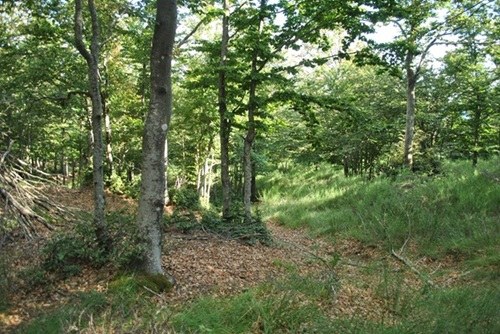Human impact on natural plant biodiversity is devastating in many of the planet's ecosystems: up to four out of five plant species are no longer found in their natural habitats in areas with the highest human ecological footprints. The index the extent to which natural resources are consumed or degraded through activities such as urbanisation, pollution and deforestation. These are the findings of the international collaborative project DarkDivNet, published in Nature, which involved more than 250 scientists from around the world. Fifteen botanists from nine Italian universities took part in the study, including Professor Alessandro Chiarucci from the University of Bologna, a member of the Scientific Committee.
The researchers collected biodiversity data from nearly 5500 sites in 119 regions of the world, recording not only the plant species present at each site, but also the native species expected to be there and those that were missing. This innovative scientific approach identified 'dark diversity'. This made it possible to calculate the potential plant diversity of each area and how much the human footprint has reduced it.
In protected areas, ecosystems generally host more than a third of the potentially suitable species, while those that are missing are mainly absent for natural reasons, such as the biological limits of their dispersal capacity. By contrast, in areas with the highest human footprint, biodiversity loss is much greater, with ecosystems retaining only one in five suitable species.
Traditional biodiversity measures—such as simply counting the number of species recorded—have not provided a complete picture. The identification of 'dark diversity' has made it possible to fill this knowledge gap. The correlation between the Human Footprint Index—which considers factors such as population density, urbanisation, agriculture and infrastructure—and dark diversity has also shown that anthropogenic impacts extend far beyond directly modified areas, up to hundreds of kilometres away, even affecting nature reserves.
"Unfortunately, the study confirms that our activities are having a negative impact on biodiversity. It is therefore necessary to fully support to policies aimed at its protection, both locally and globally," says Professor Alessandro Chiarucci, of the Department of Biological, Geological and Environmental Sciences at the University of Bologna. "In particular, it is essential to continue to expand the number and size of strictly protected areas, i.e. areas where natural processes are free to occur, in order to protect current and future biodiversity. I worked on this project as part of the National Biodiversity Future Centre, which I coordinate together with Professor Rondinini in Rome, and which is trying to build national scenarios for the future of protected areas (Spoke 4 - Activity 4 'Scenarios of area-based conservation planning and management')", concludes Professor Chiarucci.
The study also shows that the negative impact of human activity on biodiversity is less pronounced when at least one-third of the area surrounding a study site is pristine or well protected, evidence that supports the global goal of protecting 30% of terrestrial areas.
The project has therefore highlighted the critical importance of promoting healthy ecosystems both inside and outside protected areas. The concept of dark diversity offers a practical tool for identifying suitable missing species and guiding ecosystem restoration efforts.
DarkDivNet, coordinated by the University of Tartu in Estonia, involved the University of Bologna and the Italian universities of Parma, L’Aquila, Insubria, Catania, Palermo, Cagliari, Basilicata and the Ca' Foscari University in Venice.


